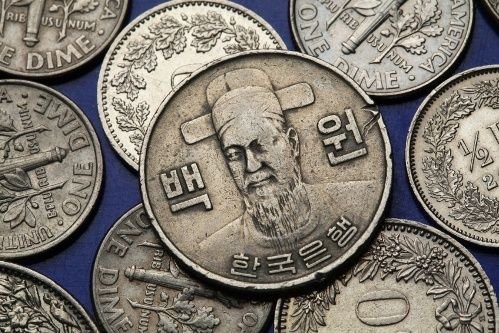
The story behind Korean coins
Just by observing and studying the images on won bills or coins, you can learn a little about the history, culture and some tourist attractions of Korea.
Joseon Dynasty scholar on 1,000 won bill
The most popular banknote in Korea has a face value of 1,000 won with an eye-catching light blue color.
Image of scholar Yi Hwang and maehwa flower on the 1,000 won bill.
He is one of the important contributors to Dosanseowon Confucius Institute.
During his lifetime, Yi Hwang loved the maehwa flower and when he passed away, Yi Hwang wanted his son to continue taking care of this flower.
Motherly love on 5,000 won and 50,000 won bills
Behind these two bills is a secret that is hard to find in any banknote in the world.

Mother and son Shin Saimdang and Yulgok Yi I on 5,000 and 50,000 won bills.
On the 5,000 won bill, behind the portrait of Yulgok Yi is a picture of the Ojukheon house, the birthplace of Shin Saimdang and where she gave birth to Yulgok YI in 1536. Now, the above house has become a landmark.
Most especially, the landscape paintings on both bills were painted by Shin Saimdang.
The benevolent king on the 10,000 won bill
The Korean 10,000 won bill is green and depicts the image of the 4th king of the Joseon Dynasty, King Sejong.

King Sejong and his work on the 10,000 won bill.
While other bills show images of important works in the character’s life, the 10,000 won bill depicts one of King Sejong’s greatest contributions.
Stories on coins
Not only paper money, coins also have images of many works or symbols that are meaningful to Korean people.

Korean coins depict the image of a naval general.
With a 10 won coin, you can admire Dabotap – a famous stone temple in Korea.
And with the smallest 1 won coin, you can see Korea’s national flower, the rose of Sharon.


